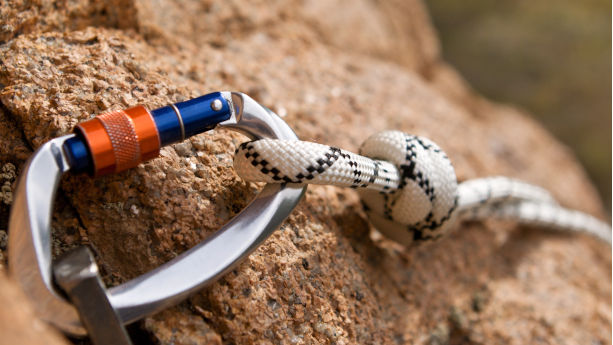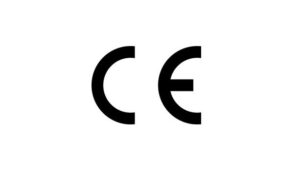
If you import or manufacture climbing equipment in the EU, you must comply with requirements such as labelling, documentation, and testing. Unsafe climbing gear can result in fatal accidents, which therefore requires strict adherence to the applicable requirements.
In this guide, we take a closer look at the PPE regulation, General Product Safety Regulation, and the REACH regulation in relation to climbing gear and equipment.
Content Overview

FREE CONSULTATION CALL (US, EU & UK)
- Request a free 30-minute call with Ivan Malloci to learn how we can help you with:
- Find product requirements
- Certification and labeling
- Lab testing
Personal Protective Equipment Regulation
The Personal Protective Equipment (PPE) Regulation applies to PPE, which the regulation defines as equipment that is designed to be held or worn by an individual for protection against risks of different types.
This includes products designed to protect wearers against falling from a height.
The regulation requires you to:
1. Ensure that your product undergoes the relevant conformity assessment procedure and testing
2. Provide at least the following documentation:
- Technical documentation
- Declaration of Conformity
- Test reports
- Instructions
3. Label climbing equipment with the CE marking and traceability information
Risk Categories
The PPE Regulation specifies three risk categories and sets different requirements according to the category. Each product is classified in a category according to the level of risk it protects from
The PPE Guidelines specifically mention climbing equipment as Category III PPE that protects against falling from a height. It also provides examples of covered products:
- Harnesses
- Thigh straps
- Belts (e.g. shoulder belts)
- Mobile fall arresters
- Climbing karabiners
- Energy absorbers
- Dynamic mountaineering ropes
- Rope clamps
The regulation and the Guidelines do not mention other forms of PPE such as helmets and protective shoes in the context of climbing equipment. Note, however, that some of these products may be used by climbers, and are also covered by the regulation.
Exceptions
The PPE Guidelines state that some climbing equipment are not considered PPE. For instance, it specifies that the following products are not PPE:
- Hammers
- Descenders that are “not fitted with a built-in speed-regulating system”
- Some types of rope-climbing equipment
Harmonised standard for climbing equipment
Climbing equipment that complies with harmonised standards is supposed to conform with the PPE Regulation safety requirements. The EU lists 19 harmonised standards for climbing equipment on its website. We list them here:
EN 564 – Mountaineering equipment – Accessory cord – Safety requirements and test methods
EN 565 – Mountaineering equipment – Tape – Safety requirements and test methods
EN 566 – Mountaineering equipment – Slings – Safety requirements and test methods
EN 567 – Mountaineering equipment – Rope clamps – Safety requirements and test methods
EN 568 – Mountaineering equipment – Ice anchors – Safety requirements and test methods
EN 569 – Mountaineering equipment – Pitons – Safety requirements and test methods
EN 892 – Mountaineering equipment – Dynamic mountaineering ropes – Safety requirements and test methods
EN 893 – Mountaineering equipment – Crampons – Safety requirements and test methods
EN 958 – Mountaineering equipment – Energy absorbing systems for use in klettersteig (via ferrata) climbing – Safety requirements and test methods
EN 12270 – Mountaineering equipment – Chocks – Safety requirements and test methods
EN 12275 – Mountaineering equipment – Connectors – Safety requirements and test methods
EN 12276 – Mountaineering equipment – Frictional anchors – Safety requirements and test methods
EN 12277 – Mountaineering equipment – Harnesses – Safety requirements and test methods
EN 12492 – Mountaineering equipment – Helmets for mountaineers – Safety requirements and test methods
EN 13089 – Mountaineering equipment – Ice-tools – Safety requirements and test methods
EN 15151-1 – Mountaineering equipment – Braking devices – Part 1: Braking devices with manually assisted locking, safety requirements and test methods
EN 16716 – Mountaineering equipment – Avalanche airbag systems – Safety requirements and test methods
EN 17109 – Mountaineering equipment – Individual safety systems for rope courses – Safety requirements and test methods
EN 17520 – Mountaineering equipment – Personal belay lanyards – Safety requirements and test methods
Essential Health and Safety Requirements
Annex II lists essential health and safety requirements for various forms of PPE. Part 3.1.2.2 of Annex II contains specific requirements for PPE meant to prevent falling from a height.
Such PPE should include a body harness and a system that can be connected to an anchorage point. The design and manufacture of that PPE and its components should ensure:
- The safety of the user in case said user experiences a vertical drop from a height
- The user can maintain a correct position to await help if needed
- The braking force should not result in injury or breakage of the PPE or its components
The manufacturer’s instructions should specify information about:
- The external anchorage point’s required characteristics
- The required minimum clearance below the user
- The appropriate way of wearing the body harness
- The correct way of attaching the connection system to the external anchorage point
Documentation
Here we list the key documentation requirements under the PPE Regulation.
| Document | Description |
| Technical documentation | The technical documentation should indicate how the manufacturer ensures the PPE’s conformity with the regulation.
It should contain the items listed in Annex III. |
| Declaration of Conformity | The Declaration of Conformity is a self-declaration that the product complies with the requirements of the regulation. It should contain the items listed in Annex IX. |
| Test report | Test reports are required as part of the technical documentation. |
| Instructions | Manufacturers must include user instructions containing the items specified in Annex II. |
Labelling requirements
The PPE Regulation requires manufacturers to affix the CE marking and provide traceability information on the labels. Here, we summarize these requirements.
| Title | Description |
| CE Marking | 
The CE marking must be: a. Permanently affixed to the PPE, or to the packaging and accompanying documents (if, for instance the product is too small) b. Followed by the notified body identification number, where applicable c. Followed by a pictogram or another marking that indicates what risk the PPE is meant to protect the user from, if necessary |
| Traceability information | Manufacturers should indicate the following on their PPE:
If they cannot put it on the product, they should do so on either its packaging or an accompanying document. |
General Product Safety Regulation (GPSR)
The General Product Safety Regulation (GPSR) sets safety requirements for consumer products. This would include climbing equipment not covered by the PPE Regulation, such as climbing hammers.
The General Product Safety Regulation (GPSR) generally mandates that you:
1. Get your product lab-tested
2. Provide technical documentation, which includes test reports, with your product
3. Label your products and packaging with traceability information
4. Provide the relevant warnings and user instructions
Standards
We could not find any harmonised standards under the GPSR for climbing equipment. There are, however, two harmonised standards that include the term “climb”, even though they are related to gym equipment.
EN 12346 – Gymnastic equipment – Wall bars, lattice ladders and climbing frames – Safety requirements and test methods
When harmonised standards do not exist, you can still use other standards (e.g. EN or ISO standards) to ensure product safety. For example, you can use the following standard for hammers to test climbing hammers, even if it may only partially cover your product:
ISO 156001 – Hammers – Technical specifications concerning steel hammer heads – Test procedures
As mentioned, many climbing products are considered to be personal protective equipment. The PPE Regulation sets many harmonised standards related to climbing or equipment.
Documentation
Here, we summarise the General Product Safety Regulation’s documentation requirements.
| Document | Description |
| Technical documentation | The technical documentation should prove the product’s safety and contain:
a. Product description b. The necessary elements to evaluate the safety of the product c. An analysis of risks relevant to the product, and associated solutions to reduce those risks, such as test reports d. A list of relevant and applied EU standards |
| Instructions | Importers and manufacturers should ensure that they provide instructions with the product so the user can safely use and dispose of said product. |
| Test reports | The regulation requires manufacturers to provide test reports regarding their products. |
Labelling requirements
In this section, we summarise the regulation’s labelling requirements that you should adhere to.
| Labelling item | Description |
| Traceability information | You should label your products, their packaging, or accompanying documents, with the following information:
|
| Safety information, instructions, and age suitability | You should accompany your product with relevant safety information and user instructions, as well as age-suitability, when applicable. |
| Warnings | You should include relevant warnings with your products (e.g. either on the product, its packaging, or an accompanying document) to inform users about potential risks. |
REACH
The REACH Regulation restricts the use of harmful substances in consumer products, which includes climbing equipment. For example, plastic buckles on harnesses may contain restricted phthalates, PAH, or heavy metals.
Annex XVII
Annex XVII lists harmful and restricted substances. Here are some examples of restricted substances that may be contained in climbing equipment:
a. Polycyclic-aromatic hydrocarbons (PAH) – may be used in rubber parts of sport climbing equipment, and it is restricted to 0.0001%
b. Cadmium – may be used in karabiners and other climbing equipment, and it is restricted to 0.01% in coating, plastic components, and more.
c. Phthalates (DEHP, DBP, BBP, DIBP) – may be found in plastic components of articles, including climbing equipment. They are restricted to 0.1% of the plasticised materials, individually or in combination.
SVHC Candidate List
You should submit a SCIP notification to ECHA if your product contains a listed SVHC in concentrations exceeding 0.1%. Climbing equipment might contain some substances on the SVHC Candidate List. Here are a some examples of such substances and products that may contain them:
a. Bumetrizole (UV-326) – may be present in climbing equipment as coating or paint material
b. 2,4,6-tri-tert-butylphenol – may be present in harness buckles made in thermoplastics
c. Diphenyl(2,4,6-trimethylbenzoyl)phosphine oxide – may be present in the coating of plastic-based material used in product components such as helmets
Lab Testing
You should ensure your products undergo testing so you can prove that your products comply with relevant requirements and are safe to use. Some regulations explicitly mandate product testing, while for others it may be a practical necessity to ensure, for instance, that restricted substances in your product do not exceed permitted levels.
When your product passes testing, you get a test report that indicates your product complies with the requirements. In some cases, such as for the PPE Regulation, the test report must be included in your technical documentation.
| Regulation | Lab testing |
| PPE Regulation | Testing for climbing equipment is necessary to ensure that the product adhere to the requirements of relevant standards, which may include specific testing methods. For example, a climbing rope may be tested for its strength, by applying a certain weight to it. |
| General Product Safety Regulation | Mechanical safety and other properties can be tested using relevant standards and test methods.
For example, ISO 156001 sets test procedures for hammers, and may therefore be relevant for climbing hammers. |
| REACH | You should have your products tested to ensure they do not contain restricted substances in concentrations exceeding allowable limits.
For instance, you should test rubber components of climbing equipment that come into contact with human skin to ensure they do not contain more than 0.5 mg/kg of PAH. |
Climbing equipment testing companies
Here we list several companies that claim to provide testing services regarding climbing equipment against the EU requirements:
- TÜV Rheinland
- SGS
- Newton
















